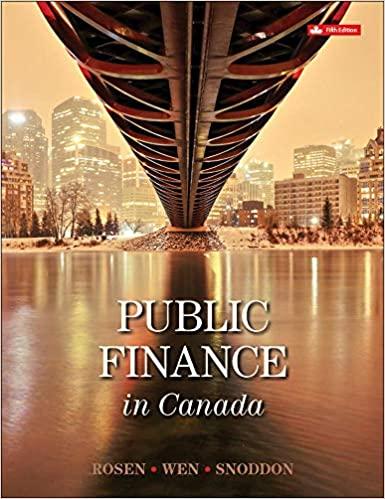
Problem 3 (9 points): Suppose that you have estimated the Fama-French three-factor and four-factor models for three different stocks: BCD, FGH, and JKL. Specifically, using return data from 2005 to 2009, the following equations were estimated: Three-Factor Model: BCD: [E(R) - RFR (0.966) (4M) + (-0.018) (19MB) + (-0.388) (AHML) (1.042) (AM) + (-0.043) (15MB) + (0.370) (AHML) FGH: [E(R) - RFR] JKL: [E(R) RFR] (1.178) (4m) + (0.526) (sMB) + (0.517) (^HML) Four-Factor Model: BCD: E(R) - RFR FGH: [E(R) - RFR] JKL: E(R) RFR (1.001) (AM) + (-0.012) (SMB) + (-0.341) (AHML) + (0.073) (AMOM) (1.122) (Am) + (-0.031) (ASMB) + (0.478) (HNL) + (0.166) (AMOM) (1.041) (^m) + (0.505) (AsmB)+(0.335) (XHmL)+(-0.283) (MOM) a) You have also estimated factor risk premia over a recent 15-year period as: x=7.23 percent, smB= 2.00 percent , HML = 4.41 percent , and A Mom=4.91 percent . Use these estimated risk premia along with the factor model estimated to confirm that the expected excess returns for the three stocks are 5.24 percent, 9.08 percent, and 11.86 percent (three-factor model) or 6.07 percent, 10.98 percent, and 8.63 percent (four- factor model), respectively. b) Suppose that you have also estimated historical factor risk prices for two different time frames: (1) 30-year period: ( )=7.11 percent , ne smB=1.50 percent, and HML=5.28 percent ), and (2) 80-year period: x=7.92 percent, asmB=3.61 percent, and RUML=5.02 percent ). Calculate the expected excess returns for BCD, FGH, and JKL using both of these alternative sets of factor risk premia in conjunction with the three-factor risk model. c) You now also consider historical estimates for the MOM risk factor over the two additional time frames: (1) Mon=7.99 percent (30-year period), and (2) mou =9.79 percent (80-year period). Using this additional information, calculate the expected excess returns for BCD, FGH, and JKL in conjunction with the four-factor risk model. d) Do all of the expected excess returns you calculated in part (a) and part (b) make sense? If not, identify which ones seem inconsistent with asset pricing theory and discuss why. Problem 3 (9 points): Suppose that you have estimated the Fama-French three-factor and four-factor models for three different stocks: BCD, FGH, and JKL. Specifically, using return data from 2005 to 2009, the following equations were estimated: Three-Factor Model: BCD: [E(R) - RFR (0.966) (4M) + (-0.018) (19MB) + (-0.388) (AHML) (1.042) (AM) + (-0.043) (15MB) + (0.370) (AHML) FGH: [E(R) - RFR] JKL: [E(R) RFR] (1.178) (4m) + (0.526) (sMB) + (0.517) (^HML) Four-Factor Model: BCD: E(R) - RFR FGH: [E(R) - RFR] JKL: E(R) RFR (1.001) (AM) + (-0.012) (SMB) + (-0.341) (AHML) + (0.073) (AMOM) (1.122) (Am) + (-0.031) (ASMB) + (0.478) (HNL) + (0.166) (AMOM) (1.041) (^m) + (0.505) (AsmB)+(0.335) (XHmL)+(-0.283) (MOM) a) You have also estimated factor risk premia over a recent 15-year period as: x=7.23 percent, smB= 2.00 percent , HML = 4.41 percent , and A Mom=4.91 percent . Use these estimated risk premia along with the factor model estimated to confirm that the expected excess returns for the three stocks are 5.24 percent, 9.08 percent, and 11.86 percent (three-factor model) or 6.07 percent, 10.98 percent, and 8.63 percent (four- factor model), respectively. b) Suppose that you have also estimated historical factor risk prices for two different time frames: (1) 30-year period: ( )=7.11 percent , ne smB=1.50 percent, and HML=5.28 percent ), and (2) 80-year period: x=7.92 percent, asmB=3.61 percent, and RUML=5.02 percent ). Calculate the expected excess returns for BCD, FGH, and JKL using both of these alternative sets of factor risk premia in conjunction with the three-factor risk model. c) You now also consider historical estimates for the MOM risk factor over the two additional time frames: (1) Mon=7.99 percent (30-year period), and (2) mou =9.79 percent (80-year period). Using this additional information, calculate the expected excess returns for BCD, FGH, and JKL in conjunction with the four-factor risk model. d) Do all of the expected excess returns you calculated in part (a) and part (b) make sense? If not, identify which ones seem inconsistent with asset pricing theory and discuss why







